
Embroidery is the art of decorating fabric or other materials using a needle to stitch thread or yarn. Embroidery may also incorporate other materials such as pearls, beads, quills, and sequins. In modern days, embroidery is usually seen on hats, clothing, blankets, and handbags. Embroidery is available in a wide variety of thread or yarn colour. It is often used to personalize gifts or clothing items.

A needlework sampler is a piece of embroidery or cross-stitching produced as a 'specimen of achievement', demonstration or a test of skill in needlework. It often includes the alphabet, figures, motifs, decorative borders and sometimes the name of the person who embroidered it and the date. The word sampler is derived from the Latin exemplum, which means 'example'.

The Royal School of Needlework (RSN) is a hand embroidery school in the United Kingdom, founded in 1872 and based at Hampton Court Palace since 1987.

Fiber art refers to fine art whose material consists of natural or synthetic fiber and other components, such as fabric or yarn. It focuses on the materials and on the manual labor on the part of the artist as part of the works' significance, and prioritizes aesthetic value over utility.

Backstitch or back stitch and its variants stem stitch, outline stitch and split stitch are a class of embroidery and sewing stitches in which individual stitches are made backward to the general direction of sewing. In embroidery, these stitches form lines and are most often used to outline shapes and to add fine detail to an embroidered picture. It is also used to embroider lettering. In hand sewing, it is a utility stitch which strongly and permanently attaches two pieces of fabric. The small stitches done back-and-forth makes the back stitch the strongest stitch among the basic stitches. Hence it can be used to sew strong seams by hand, without a sewing machine.

Morris, Marshall, Faulkner & Co. (1861–1875) was a furnishings and decorative arts manufacturer and retailer founded by the artist and designer William Morris with friends from the Pre-Raphaelites. With its successor Morris & Co. (1875–1940) the firm's medieval-inspired aesthetic and respect for hand-craftsmanship and traditional textile arts had a profound influence on the decoration of churches and houses into the early 20th century.

In embroidery, couching and laid work are techniques in which yarn or other materials are laid across the surface of the ground fabric and fastened in place with small stitches of the same or a different yarn.

The straight or running stitch is the basic stitch in hand-sewing and embroidery, on which all other forms of sewing are based. The stitch is worked by passing the needle in and out of the fabric at a regular distance. All other stitches are created by varying the straight stitch in length, spacing, and direction.

In needlework, a slip is a design representing a cutting or specimen of a plant, usually with flowers or fruit and leaves on a stem. Most often, slip refers to a plant design stitched in canvaswork (pettipoint), cut out, and applied to a woven background fabric. By extension, slip may also mean any embroidered or canvaswork motif, floral or not, mounted to fabric in this way.
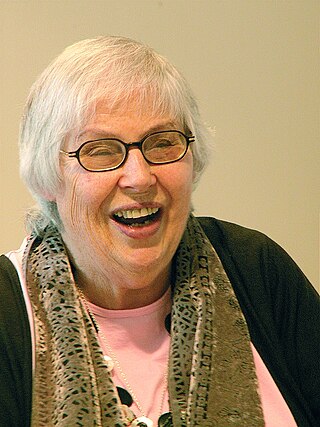
Valerie Anne Campbell-Harding was an experimental textile art designer and author of 24 books.

English embroidery includes embroidery worked in England or by English people abroad from Anglo-Saxon times to the present day. The oldest surviving English embroideries include items from the early 10th century preserved in Durham Cathedral and the 11th century Bayeux Tapestry, if it was worked in England. The professional workshops of Medieval England created rich embroidery in metal thread and silk for ecclesiastical and secular uses. This style was called Opus Anglicanum or "English work", and was famous throughout Europe.
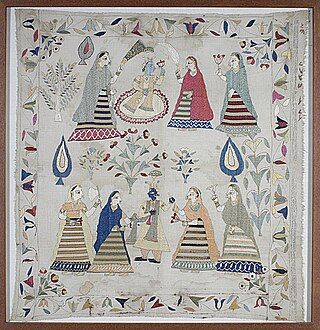
The Chamba Rumal or Chamba handkerchief is an embroidered handicraft that was once promoted under the patronage of the former rulers of Chamba kingdom. It is a common item of gift during marriages with detailed patterns in bright and pleasing colour schemes.
The 62 Group of Textile Artists is an international group of professional textile artists founded in the United Kingdom in 1962. The group is a Constituted Artists Co-operative, focussed on exhibiting the work of its members in the UK and overseas. Membership of the group is achieved through a selection process. The 62 Group requires members to submit work to a selection panel of their peers for every exhibition "If members fail to submit, or are rejected for three successive exhibitions, then membership is forfeited...a policy which ensures that the group consistently produces exciting work." The increased profile of textile art and its evolution in the latter part of the 20th century "has to a great extent been dictated by members of the 62 Group."
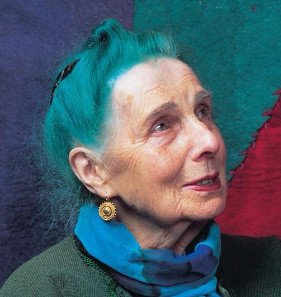
Constance Mildred Howard, later Constance Parker, was an English textile artist and embroiderer who had a profound impact on the development and teaching of those subjects in Britain. The Constance Howard Gallery, part of Goldsmiths, University of London, is named in her honour.

William Morris (1834-1898), a founder of the British Arts and Crafts movement, sought to restore the prestige and methods of hand-made crafts, including textiles, in opposition to the 19th century tendency toward factory-produced textiles. With this goal in mind, he created his own workshop and designed dozens of patterns for hand-produced woven and printed cloth, upholstery, and other textiles.
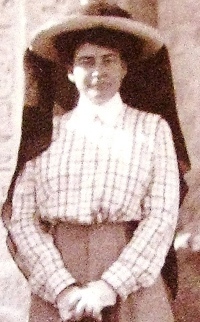
Louisa Pesel (1870–1947) was an English embroiderer, educator and textile collector. She was born in Bradford, and studied textile design at the National Art Training School, causing her to become interested in decorative stitchery. She served as the director of the Royal Hellenic School of Needlework and Lace in Athens, Greece, from 1903 to 1907. Pesel served as the first president of the Embroiderers' Guild. She produced samplers for the Victoria and Albert (V&A) Museum and cushions, kneelers, alms bags and a lectern carpet for Winchester Cathedral. She collected textiles extensively, and following her death in Winchester in 1947, her collection went to the University of Leeds.

Mary Cozens-Walker was an English textile artist and painter best known for her three-dimensional works pertaining to her own domestic life. She exhibited in the United Kingdom, Japan, and the United States. She has appeared as a model in about 600 paintings. Her own work is in national collections and paintings of her are also in national collections.
Margaret Helen Swain was an English embroidery and textile historian. Trained as a nurse in London, she began a career as a historian after noticing no history about Ayrshire whitework embroidery in books following an exhibition at the Signet Library which she visited. Swain's research on the subject resulted in the publication of several books, she held two exhibitions, and wrote about embroidery, household textiles and tapestries in museum journals, magazines and newspapers. She was awarded an honorary Master of Arts degree from the University of Edinburgh in 1981. A pencil portrait of Swain was made by Elizabeth Blackadder and a collection of papers and objects related to her career are stored at National Museums Scotland.
Winsome Douglas (1919-2016) was a British embroiderer and teacher active in the United Kingdom in the 1950s and 1960s. She was born in Hartlepool in County Durham in 1919, and died at the age of 97 on 28 December 2016 in Hartlepool.
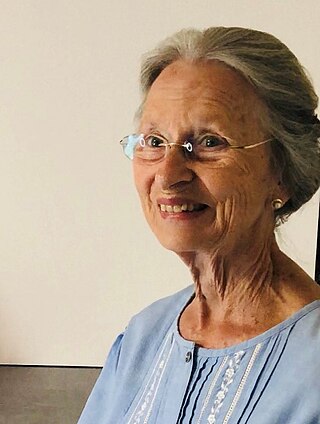
Diana Springall is, according to the Victoria and Albert Museum, "amongst the most well-known of all British textile artists", who has been committed to raising the profile of the contemporary art of embroidery through the Diana Springall Collection. Her work is found in many private and public collections worldwide. As well as creating art and teaching, Springall has held various appointments including chair of both the Embroiderers' Guild and the Society of Designer Craftsmen. Throughout her career, Springall has campaigned for the promotion of embroidery as a true art form. She has assembled the Diana Springall Collection, an extensive collection of contemporary pieces from various artists showcasing embroidery as fine art.

















